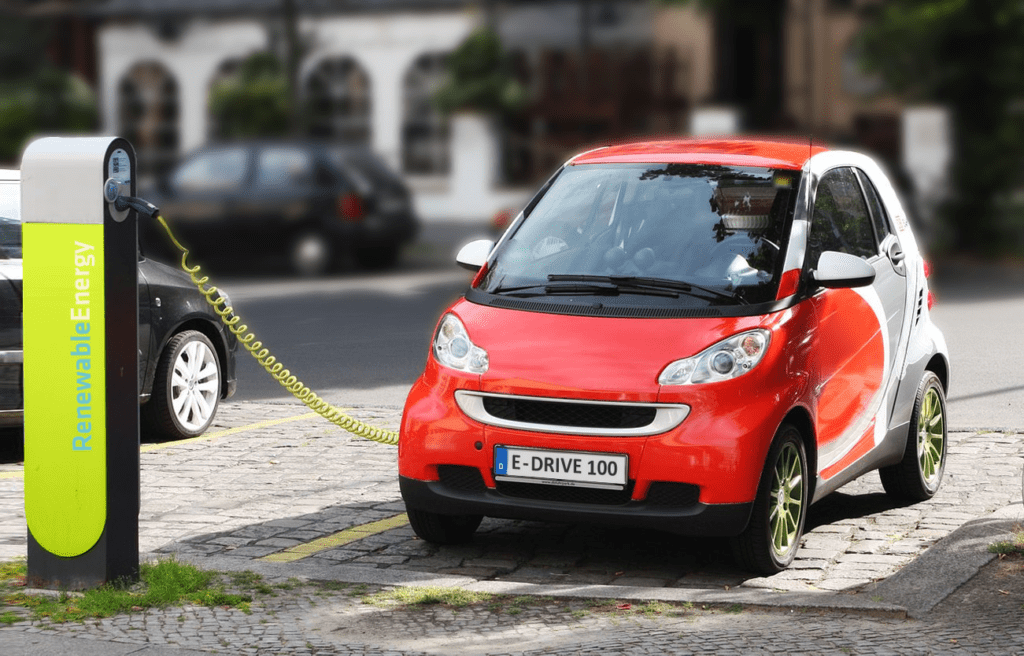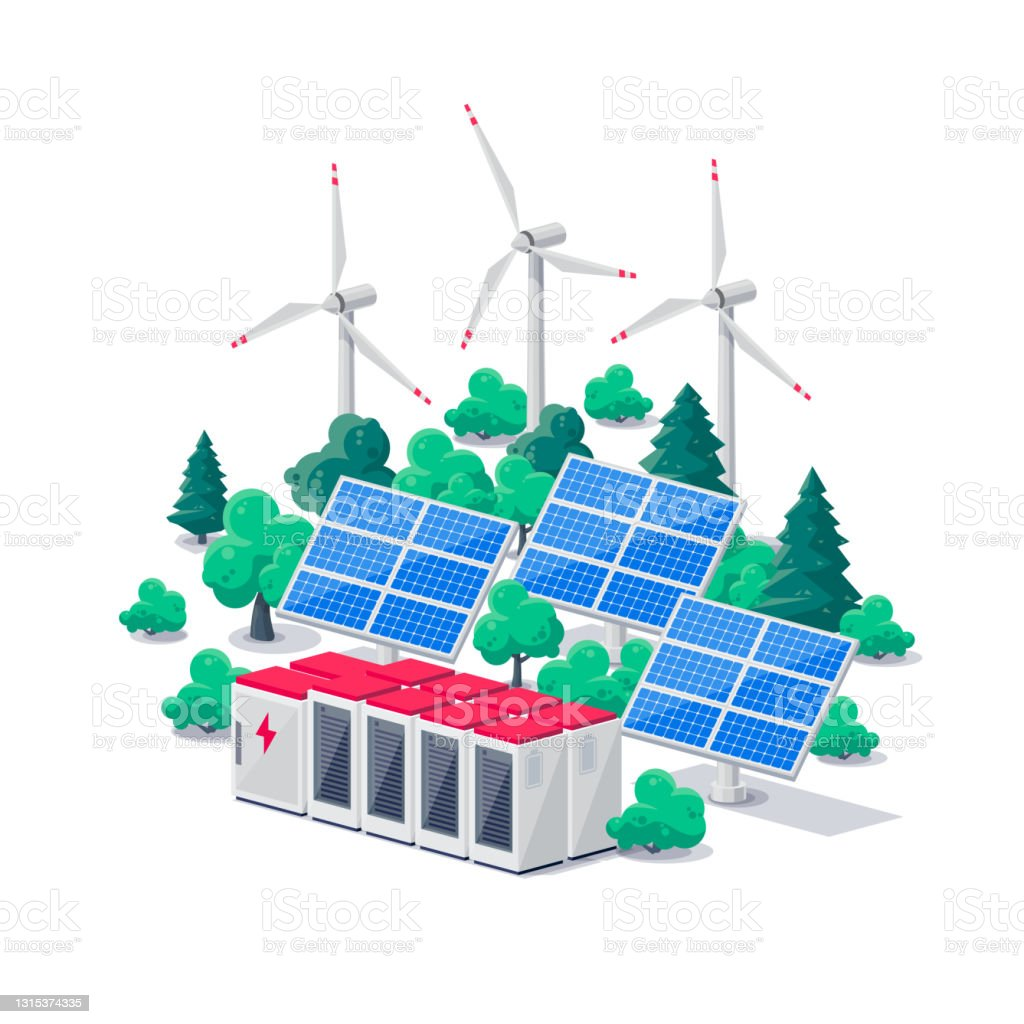Different Ways of Energy Storage
Introduction
Energy storage is one of the most critical challenges facing the world today. As the demand for electricity grows, so does the need for energy storage systems that can help balance the grid and manage intermittent renewable sources like wind and solar power. In recent years, there has been a significant increase in the deployment of energy storage systems across the globe, and this trend is expected to continue in the coming years.
Traditional forms of energy storage, such as pumped hydro storage, have been in use for many years. However, new technologies are emerging that offer more efficient, cost-effective, and environmentally friendly ways of storing energy. These new technologies are crucial to achieving the goals of the Paris Agreement and transitioning towards a more sustainable energy system.
One of the most promising technologies for energy storage is battery technology. Batteries have been used for many years to power small devices like cell phones and laptops. However, advances in battery technology are now allowing for larger and more complex applications, including electric vehicles and stationary energy storage systems. Lithium-ion batteries are currently the most widely used type of battery, but other battery chemistries such as solid-state batteries and flow batteries are also gaining popularity.
Another form of energy storage that is gaining traction is hydrogen energy storage. Hydrogen can be produced through the electrolysis of water using renewable energy sources like wind and solar power. Once produced, hydrogen can be stored in tanks or used in fuel cells to generate electricity. Hydrogen energy storage has the potential to be a game-changer for the energy sector, as it offers a clean and sustainable way of storing energy.
Other forms of energy storage that are currently being explored include thermal energy storage, compressed air energy storage, and flywheels. Thermal energy storage involves storing energy in the form of heat, which can then be used to generate electricity. Compressed air energy storage involves storing compressed air in underground caverns and releasing it to drive a turbine when electricity is needed. Flywheels involve storing energy in a spinning mass that can be used to generate electricity when needed.
The adoption of these new energy storage technologies is crucial to achieving a more sustainable energy system. They can help to balance the grid, reduce the need for fossil fuels, and increase the penetration of renewable energy sources. In addition, they can help to improve the reliability and resilience of the grid and reduce the risk of power outages.
In conclusion, energy storage is a critical component of the transition toward a more sustainable energy system. New technologies such as battery technology, hydrogen energy storage, and other emerging technologies offer promising solutions to the challenges of energy storage. With continued investment and research, these technologies have the potential to revolutionize the way we store and use energy in the future.
What Are Some Use Cases of Energy Storage in the future?
Energy storage has a variety of applications, ranging from minor sectors such as residential or commercial to large-scale enterprises such as those listed below.
Electric automobiles
Electric automobiles, also known as electric cars, are vehicles that are powered by electric motors instead of traditional internal combustion engines (ICEs) that use gasoline or diesel. Electric cars are gaining popularity due to their environmental benefits, low operating costs, and increased driving range as battery technology improves.

Electric cars use batteries to store energy that is used to power the electric motor. The batteries are charged using an external power source, such as a wall outlet or charging station. The range of an electric car depends on the size of the battery and how it is used, with newer models having ranges of up to several hundred miles on a single charge.
In addition to their environmental benefits, electric cars have lower operating costs compared to traditional ICE vehicles, since electricity is generally cheaper than gasoline. They also require less maintenance since they have fewer moving parts, and their regenerative braking systems can help to extend the life of the brakes.
Despite their advantages, electric cars also face some challenges, such as limited charging infrastructure in some areas, higher upfront costs, and longer charging times compared to refueling a traditional ICE vehicle. However, as battery technology improves and more charging infrastructure is installed, these challenges are becoming less significant.
Overall, electric automobiles are an important technology in the transition to a more sustainable transportation system, and they are likely to play a significant role in the future of personal transportation.
Electric vehicles
Electric vehicles, or EVs, are vehicles that are powered by electric motors instead of internal combustion engines (ICEs) that run on fossil fuels. They use electricity stored in batteries or other energy storage devices to power the motor and move the vehicle.
EVs can be divided into two main categories: battery electric vehicles (BEVs) and plug-in hybrid electric vehicles (PHEVs). BEVs run entirely on electricity and do not have a backup ICE, while PHEVs have both an electric motor and an ICE that can be used as a backup if needed.

EVs have several advantages over ICE vehicles. They are more energy-efficient and produce less pollution, as they emit no exhaust gases. They are also quieter and provide smoother rides due to their electric drivetrain. Additionally, the cost of operating an EV is generally lower than that of an ICE vehicle, as electricity is usually cheaper than gasoline or diesel.
However, EVs still face some challenges. They generally have a shorter range than ICE vehicles and take longer to recharge. The cost of purchasing an EV is also typically higher than that of an ICE vehicle, although this is changing as battery technology improves and production costs decrease.
Overall, EVs represent an important step toward reducing greenhouse gas emissions and combating climate change, as transportation is a significant contributor to global emissions. As technology continues to improve and costs decrease, EVs are likely to become an increasingly popular choice for personal and commercial transportation.
Industrial IoT or Industry 4.0 and OEMs
Industrial Internet of Things (IIoT), also known as Industry 4.0, is the application of IoT technology to industrial settings such as manufacturing, logistics, and supply chain management. It involves the use of sensors, data analytics, and machine learning to optimize industrial processes and improve efficiency.
Original Equipment Manufacturers (OEMs) are companies that produce components or systems that are used in other companies products. For example, a car manufacturer might use OEM parts from various suppliers to build its vehicles.

OEMs are particularly well-suited to take advantage of Industry 4.0 technology, as they are often involved in the production and supply chain processes of many different companies. By integrating IIoT technology into their products and services, OEMs can help their customers optimize their processes and improve efficiency.
For example, an OEM that produces sensors for industrial machinery can use IIoT technology to collect data from those sensors and analyze them to identify patterns and potential problems. This can allow the OEM’s customers to proactively address issues before they become major problems, minimizing downtime and improving overall efficiency.
Similarly, an OEM that produces components for logistics or supply chain management can use IIoT technology to track the movement of goods and optimize routes and delivery schedules. This can help their customers reduce transportation costs and improve delivery times.
Overall, Industry 4.0 represents an exciting opportunity for OEMs to provide more value to their customers and differentiate themselves from competitors. By leveraging IIoT technology, OEMs can help their customers achieve greater efficiency and productivity, leading to increased customer satisfaction and loyalty.
Smart grids and microgrids
Smart grids and microgrids are two related concepts in the field of electrical power systems.
A smart grid is an electrical grid that uses advanced communication and information technologies to improve the reliability, efficiency, and sustainability of the power system. It is designed to better integrate renewable energy sources, manage demand response, and optimize power distribution and transmission.

A microgrid is a localized, small-scale version of a smart grid that can operate independently or in parallel with the main electrical grid. Microgrids are typically designed to provide power to a specific community or building and may use a variety of energy sources, including solar, wind, and diesel generators.
One of the main advantages of microgrids is their ability to operate independently of the main electrical grid, which can help improve reliability and reduce the risk of power outages. Microgrids can also be designed to be more efficient than traditional grids, as they can be tailored to the specific energy needs of a community or building.
Overall, smart grids and microgrids are important innovations in the field of electrical power systems, as they offer significant improvements in reliability, efficiency, and sustainability. They represent an important step toward a more reliable, resilient, and sustainable energy future.
Large data centers of IT companies
Large data centers are critical infrastructures for IT companies, as they provide the computing power and storage necessary to support a wide range of online services and applications. These data centers typically consist of large numbers of servers, storage devices, and networking equipment housed in dedicated facilities designed to provide a secure and reliable environment for IT operations.

IT companies rely on these data centers to provide 24/7 availability and high levels of performance, with downtime or service disruptions being unacceptable for many services. To achieve this, data centers are designed with redundant power and cooling systems, backup generators, and other fail-safe measures to ensure continuous operation even in the event of a power outage or other disruption.
Data centers also consume significant amounts of energy, both in terms of powering the IT equipment and providing cooling to keep temperatures within acceptable limits. As a result, IT companies are increasingly focused on reducing their data center energy consumption and improving the efficiency of their operations through measures such as virtualization, power management, and use of renewable energy sources.
In addition to energy consumption, data centers can also have significant environmental impacts due to their water usage and the disposal of electronic waste. Many IT companies are taking steps to reduce these impacts, such as through water recycling and responsible disposal of electronic equipment.
Overall, large data centers are critical infrastructure for IT companies, and their efficient and sustainable operation is becoming increasingly important as IT services continue to grow in importance in our daily lives.
Energy power plants
Energy power plants are facilities that generate electricity from various sources of energy, such as coal, natural gas, nuclear energy, or renewable sources like wind, solar, or hydropower. These power plants are critical for providing electricity to homes, businesses, and industries, and they play a crucial role in supporting economic growth and development.
Traditional power plants, such as those that burn coal or natural gas, produce electricity by heating water to create steam, which then drives a turbine to generate electricity. Nuclear power plants use the heat generated by nuclear fission to create steam, which then drives a turbine. Renewable energy power plants, on the other hand, generate electricity by harnessing energy from renewable sources, such as the wind or sun.
Power plants can vary significantly in size and capacity, from small-scale microgrids that provide power to a few homes or businesses, to large-scale utility-scale power plants that generate electricity for entire cities or regions. The choice of energy source used by a power plant depends on a variety of factors, including availability, cost, environmental impact, and regulatory requirements.
The operation of power plants can have significant environmental impacts, particularly those that burn fossil fuels. These impacts can include air pollution, greenhouse gas emissions, and water usage. As a result, many countries and companies are increasingly investing in renewable energy sources to reduce their dependence on fossil fuels and minimize their environmental impact.
Overall, energy power plants play a critical role in our energy system, and their efficient and sustainable operation is becoming increasingly important as the world transitions to a low-carbon economy.
Conclusion
In conclusion, the future of energy storage is bright and promising. With the rapid growth of renewable energy sources and the need to balance the grid, there is a growing demand for efficient, cost-effective, and environmentally friendly energy storage systems. The emergence of new technologies such as battery technology, hydrogen energy storage, and other emerging technologies is transforming the energy storage landscape.
Battery technology, in particular, is already widely used in small-scale applications, and its potential for large-scale energy storage is rapidly being realized. Lithium-ion batteries are the most widely used type of battery, but advancements in solid-state batteries, flow batteries, and other battery chemistries are offering even greater potential.
Hydrogen energy storage is also gaining momentum, and its potential to provide a clean and sustainable way of storing energy makes it an attractive option. Other emerging technologies such as thermal energy storage, compressed air energy storage, and flywheels also offer promising solutions to the challenges of energy storage.
Overall, the adoption of these new energy storage technologies is crucial to achieving a more sustainable energy system. They can help to balance the grid, reduce the reliance on fossil fuels, and increase the penetration of renewable energy sources. Furthermore, they can improve the reliability and resilience of the grid, reduce the risk of power outages, and help to meet the ambitious climate goals set out in the Paris Agreement.
In summary, the future of energy storage is exciting, and continued investment and research in these emerging technologies will be critical to realizing the full potential of energy storage in the transition towards a more sustainable energy system.



